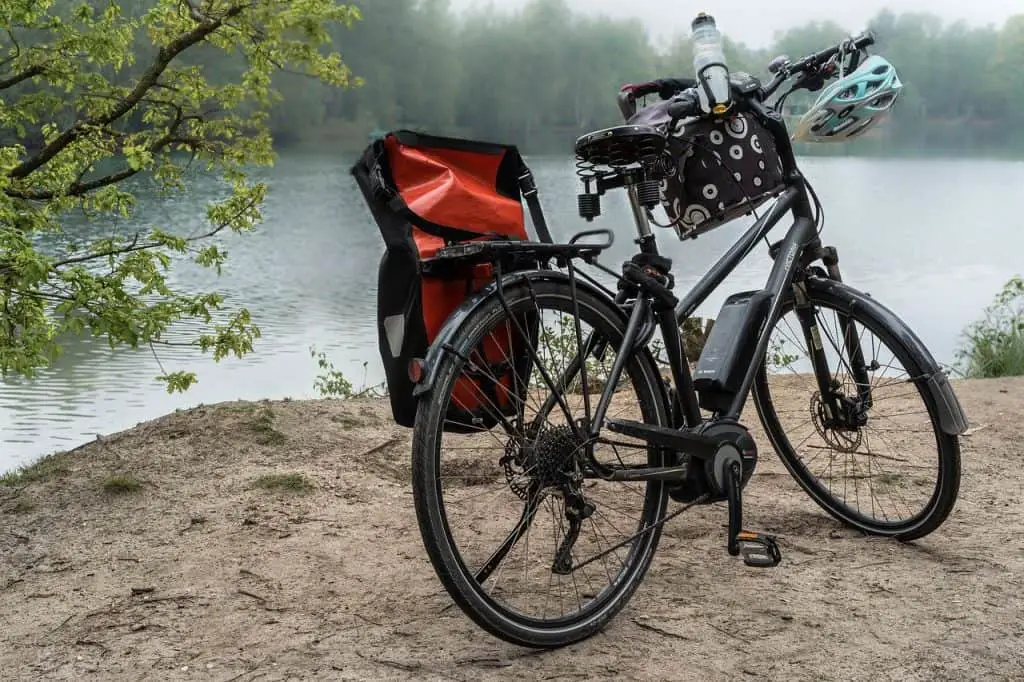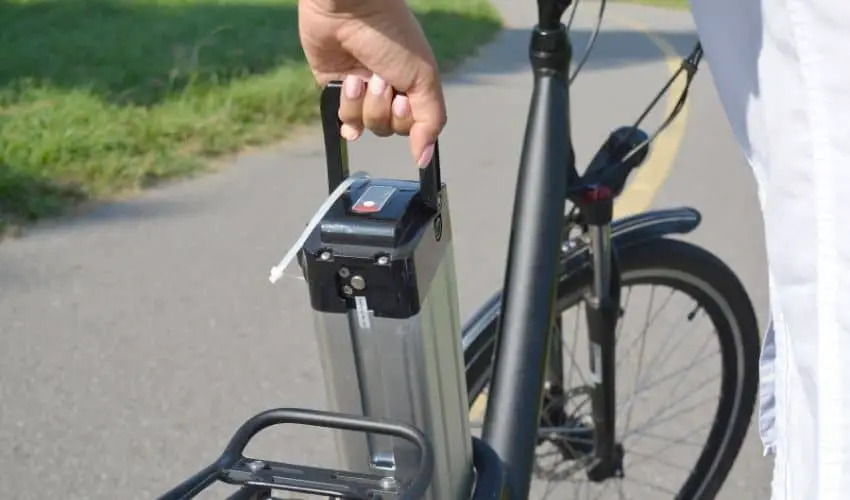Electric bikes are a great mode of transportation for people who need to travel a lot in the city. You won’t tire yourself by continuously pedaling, and you can reach higher speeds effortlessly, allowing you to reach where you need to be on time. To ensure that you don’t run out of battery power during your commute, you must charge timely and appropriately. If you’re new to e-bikes and don’t know how each component works, this guide on how to charge an electric bike battery will help clear things for you.
This article goes over the process of charging the battery, how long it takes to charge, tips for prolonging the life of your e-bike’s battery, and more. This way, you can ensure that you’re taking good care of the battery, saving you from spending money on replacements in the near future.
How to Charge an Electric Bike Battery
Typically, charging an electric bike battery does differ from one manufacturer to the other. Therefore, you should always go through the instruction manual thoroughly before attempting to charge your bike.
That said, there are some common steps that you can follow that are about the same for all the electric bike batteries. Here is a complete rundown on how to charge an electric bike battery safely and correctly.
Step-1: Remove the Battery Pack
Your electric bike will come with its batteries inside a battery pack. You can find your battery pack somewhere in the middle of your bike or just behind your seat. The battery pack will come with a bay where it can connect with the bike.
When your battery is out of power, switch it off so that there’s no current going through it when you’re disconnecting it. Next, gently remove the battery pack from the bay.
Step-2: Connect the Battery to the Charger
Now that the battery pack is out, you will need to connect the battery with the charger. The charger will come with your electric bike.
It will have two slots for cables on each end of the charger. You must connect one end to the battery and the other to a power supply.
Read How to Repair Electric Bike Battery
Step-3: Let Your Battery Charge Completely
After connecting everything, turn the power on and let the battery charge. Typically electric bike batteries have an LED that indicates the charge percentage or whether it’s charged or not.
You can expect your battery to take anywhere between 2 and 6 hours to charge to 100%. However, the exact time that your electric bike battery will take to charge will depend on the bike’s manufacturer. The charging duration will also depend on the size of your battery.
Larger batteries take more time to charge, but they last longer before needing a recharge. However, that is not always the case.
You should note that the amount of mileage your battery will give you per hour of charge is not the same for every electric bike. So, you may get the same mileage (for example, 50 miles) on two different bikes that have different charging durations.
For example, you could ride 50 miles on a bike that takes 4 hours to charge completely, while another bike takes 5 hours for the same mileage. In this example, one bike gives
In some cases, your battery may take 4 hours to charge but provide you with better total mileage than a battery that requires 6 hours to charge.
An example of this an electric bike that can travel 60 miles after charging fully in 4 hours, and another that travels 50 miles after 6 hours of charge. Just make sure to follow the instructions provided with your specific electric bike model.
Step-4: Reinstall the Battery Pack into Your Bike
As soon as the battery is charged, switch the power off, and disconnect the battery from the charger. All you have to do after that is insert the battery pack into the bay on your bike.
Connect the cables firmly so that your bike gets power from the battery. Turn the battery back on, and you’re good to go.
Electric Bike Battery Charging Tips to Ensure Longer Lifespan
Now that you know how to charge an electric bike battery, you should know what steps you can take to ensure your battery lasts longer per charge and has a better lifespan. Take a look at the following electric bike battery charging tips.
1# Charge Your New E-Bike for Longer than the Average Charge Time
It can help to charge the battery for an extra few hours than the average charge time on the first charge. As a result, it may help the current to flow through the cells properly, ensuring that the battery is running perfectly from the start.
2# Don’t Overcharge Your E-Bike Battery
While it’s acceptable to slightly overcharge your electric battery for the first time, you should not repeat that. Avoid leaving your battery on charge for a day or more after it has completed charging. Leaving it for that much time means that the battery will be in a discharge and charge cycle.
The battery will discharge to about 95% and then be recharged by the charger. If this continues for a long, it can create poor charging cycles. As a result, your battery may not provide the same mileage at full charge, or it may need replacement soon.
3# Charge Your Electric Bike Battery As Often As Possible
A regularly-used battery is a healthy battery. You should use and, consequently, charge your electric bike battery regularly so that it holds charge effectively and has a better lifespan. Leaving your battery idle for a long time will weaken its effectiveness over time.
It’s also important at this point for you to know that you should not wait to charge your battery when it discharges completely. Charging it when it has no power left will take it longer to fully charge. It may also mean that you won’t be charging it as frequently as you should.
For example, if your e-bike battery gives you 60 miles on a full charge and you travel only 8 to 10 miles a day, you’ll be charging it only once every 6 days. This frequency is not ideal for ensuring that your battery stays in good condition.
Also, leaving your battery with some power in it at all times can help the cells retain their cycles for more time than otherwise.
You could recharge your bike battery every time after using it. However, if you don’t use it much in a single day, you could charge it when the battery is somewhere between 30 and 60 percent.
Now, your battery may not show the exact percentage of power remaining, so you will have to assume how much is left. Just make a note of the total amount of mileage your bike gives on a full charge, and calculate how much battery is left depending on how much distance you travelled.
Consider this example: your electric bike gives you 50 miles on a full charge. You will have about 60% battery percentage after travelling 20 miles and 30% after travelling 35. So, you can use rough estimates like this to determine the battery percentage.
4# Don’t Drain the Battery Before Storing It
There could be a number of reasons why you would not use your electric bike for some time. If you’re storing your bike without using it for some time, make sure that your battery has some power in it. You should aim to store the battery with about 40% to 70%.
Leaving the cells without any power in them for a long time can damage their ability to hold charge effectively.
5# Try to Use and Charge the Battery in Moderate Temperatures
You can shorten the lifespan of your electric bike battery by using it in extreme temperatures. That is to say that you should try and avoid riding in freezing temperatures, like in New York winters, or when it’s above 110 degrees Fahrenheit.
This also means that you should avoid leaving your bike stationary directly in the sun for several hours a day, especially during the summer. Doing so could result in your bike battery being exposed to high heat.
The same tip about moderate temperature also applies to charging your battery. It’s best to charge your bike battery in temperatures between 60 and 70 degrees Fahrenheit.
By following these practices, you can use your bike battery for a long time before replacing it. Battery replacements can be costly, so following a few easy tips can save you money in the long run.
Questions About Electric Bike Batteries and Charging Them
Below are some important questions that new electric bike riders may have about how to charge an electric bike battery and preserve them.
Are There Special Outlets to Charge an E-Bike Battery?
Charging electric bikes are not the same as charging electric cars, so there are no designated charging stations. You can charge your electric bike at any place that has a power outlet.
Is It Safe to Remove a Charging Battery?
Removing the battery from charge even if it’s not fully charged is safe. If you take it out a few minutes before it’s done charging, it will give you about the same mileage.
That said, it’s best to let it charge fully if you have the opportunity to do so as it will provide you with more mileage on the whole.
Also, this way, you’ll allow it to go through its full charging cycle. However, if you’re in a rush to go somewhere, there’s no harm in taking it off charge early.
Does an E-Bike Battery Charge By Pedaling?
You can get a bike in which the battery charges by pedaling. The advantage of such a model is that it can help you travel long distances with battery power on the go. You also won’t have to worry about reaching zero power if you forget to charge it.
The disadvantages of such a bike are that they cost a lot more than one without the pedal charger. Also, it will only provide you with about 5% to 10% of extra mileage if you use the feature correctly.
It’s also important to note that there may be more resistance when pedaling because you’ll be charging the battery as well.
So, this is not ideal for elderly citizens or people with knee problems. An excellent alternative to pedal charging is carrying an additional electric bike battery with you when you travel long distances. When one battery is low, swap it with the other. It’ll only take you a minute to make the change.
However, if you exceed your bike’s mileage in one day, it’s best to stick with just one battery.
Are Electric Bike Batteries Replaceable?
You can find replacement batteries for most bikes in the market. To replace it, all you have to do is remove the battery pack from the bay and install a new one. You can use a second battery pack too if you travel long distances in one day.
Batteries do expire, so you will have to replace yours with a new one after your old one loses functionality. In that case, you can replace your battery with another one of similar specifications, or you can upgrade it with one with more power.
Typically, batteries can go up to approximately 500 complete charging cycles before one loses over 80% of its power.
After that point, the electric bike battery will still work, but it won’t give you nearly the same mileage it did before. Thus, the number of years the battery can stay effective will depend on how often you use and charge your e-bike.
Some bike batteries can also go up to 1000 cycles or even 1200 cycles. These batteries may be more expensive than others. Bike batteries often come with two years of warranty as well, so you can expect them to last you at least that much time.
The prices of electric bike batteries vary based on size, capacity, and brand. That said, you can expect the prices to be somewhere between $500 and $800.
When purchasing a new battery for your electric bike, make sure to pick one that can fit in your bike’s battery bay. Make a note of the specific size and shape of the battery bay and the battery.
How to Improve the Mileage on the Battery?
While your electric bike will come with a mileage rating on a full charge, there are ways that you can extend the number of miles you travel on a single charge. One way to do this is by adjusting the assistance setting to a low setting.
The lower assistance you receive from the battery power, the more distance you can cover using the electric bike battery.
As you may know already, bikes come with a number of speed transmissions. Higher gears are meant for higher speeds and lower gears for lower speeds. Therefore, if you switch the gears correctly, you can ensure that your riding experience is smoother on the whole.
This way, you’ll be using less force to pedal, and the bike will use lesser power from the battery to keep you moving.
So, try to keep an eye on the road in front of you and adjust gears according to the speed you’re traveling at. If you’re coming to a stop, lower the gear before you stop.
Starting from the lowest gear will require the least amount of effort from you and your bike battery.
You should also note that your bike will use more battery power at higher speeds. So, once you reach a high speed, switch the assistance level to the minimum so that you can cruise by with minimal battery power.
Pedaling at high speed won’t require much effort anyway, so you won’t need much battery assistance at that point.

Caring for Your Electric Bike Battery in the Long Term
After reading this guide, you should know exactly how to charge an electric bike battery and what to do to keep it in good condition. Electric bike batteries can last for a long time if you take proper care of them and use them as much as possible.
In addition to everything mentioned above, you should also take a lot of care in preventing environmental damage to your bike and its battery.
Like the bike itself, an electric bike battery is not waterproof, even if you can ride it in the rain. You must make sure that the battery bay isn’t exposed to much water. You should also avoid storing it in a place with high humidity and extreme temperatures.
If you plan on storing your bike in the garage, make sure that the temperature is not higher than 110 degrees Fahrenheit, like it does in California summers. When storing the battery only, it’s best to keep it in a place with low humidity levels and an average temperature between 32 and 104 degrees Fahrenheit.
Another tip you should be wary of is that you should only use the battery charger that came with the manufacturer. Using a third-party charger that’s not approved could damage your battery, which can cost you a lot of money in repairs or replacement.
You may like the biking articles:
- 5 Cheapest Electric Bikes – 2021 List
- Electric Bike VS Electric Scooter – Which Is Better?
- All You Need to Know About Electric Bike Tires
- Best Storage Tips for Electric Bikes: Where to Store Your Electric Bike?
- Top 6 Reasons Why Electric Bikes are so Expensive
- Electric Bike VS Regular Bike – Which Is Better?
- Best 3-Wheel Electric Bikes
- Best Electric Trikes for Seniors
- Electric Bike VS. Motorcycle: Which Is Better?
- Major Electric Bike Problems
- All You Need to Know About Shipping Electric Bikes

I am Michael, an avid rider and bike expert. I am here to provide, biking tips and expert advice on in-depth bike reviews covering features, capabilities, price range, and much more. Specially on electric bikes, mountain bikes, road bikes, etc. I will provide honest product reviews, along with expert advice on purchasing, training, and maintenance. Check out my complete profile.





